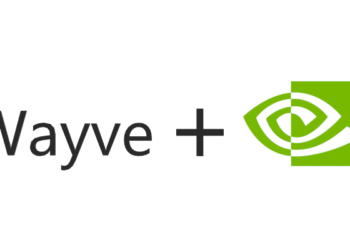In Web3, where blockchain technology promises decentralization and empowerment, the risk of scams and fraud is also on the rise. As more people engage with cryptocurrencies, NFTs, decentralized applications (dApps), and other aspects of Web3, understanding how to navigate this new digital frontier safely is crucial. This comprehensive guide will explore practical strategies and tips to help you protect yourself and your assets in Web3 environments.
Risks and Challenges in Web3
Despite its promise, Web3 introduces unique risks due to its decentralized nature and pseudonymous transactions.
A. Scams and Fraud: Ponzi schemes, rug pulls, phishing attacks, and fake token sales are prevalent.
B. Smart Contract Risks: Vulnerabilities in smart contracts can lead to exploits and asset losses.
C. Regulatory Uncertainty: Legal and regulatory frameworks are still evolving, posing compliance risks.
D. Wallet Security: Theft through compromised wallets or phishing attempts is a significant concern.
Identifying Common Web3 Scams
1. Ponzi Schemes and High-Yield Investment Programs (HYIPs)
Ponzi schemes promise high returns with little risk, relying on new investor funds to pay existing investors. Signs of a Ponzi scheme include unrealistic promises of guaranteed returns and lack of transparency about the investment strategy.
2. Rug Pulls
In decentralized finance (DeFi), rug pulls occur when developers abandon a project after raising funds, taking liquidity from pools, or selling tokens before the project collapses. Investors are left with worthless tokens and financial losses.
3. Phishing Attacks
Phishing involves malicious actors impersonating legitimate websites or services to steal login credentials or private keys. Common phishing tactics include fake token sale announcements, misleading URLs, and social engineering.
4. Fake Token Sales and ICO Scams
Scammers create fake tokens or initial coin offerings (ICOs), convincing investors to send funds in exchange for worthless or non-existent tokens. Lack of transparency, vague whitepapers, and unrealistic promises are red flags.
5. Malicious dApps and Smart Contracts
Smart contracts can contain vulnerabilities that hackers exploit to drain funds or manipulate outcomes. It’s crucial to audit smart contracts and use trusted platforms with a track record of security.
Best Practices for Staying Safe in Web3
1. Conduct thorough research.
i. Before participating in any project or investing in tokens: Verify Team and Advisors: Research the background of project developers and advisors. Look for real identities and credible experiences.
ii. Audit Trail: Check for transparency in project documentation, including whitepapers, roadmaps, and audit reports.
iii. Community Engagement: Active and engaged communities on platforms like Discord, Telegram, or Twitter can indicate legitimacy.
2. Secure your digital wallets.
i. Use Hardware Wallets: Hardware wallets like Ledger or Trezor provide offline storage and protection against remote attacks.
ii. Enable Two-Factor Authentication (2FA): Secure accounts with 2FA to add an extra layer of protection against unauthorized access.
iii. Backup Your Private Keys: Store private keys securely and consider using encrypted storage or password managers.
3. Stay vigilant against phishing.
i. Verify URLs: Always type URLs directly into your browser or use bookmarks to access legitimate websites. Watch for subtle misspellings or domain extensions.
ii. Beware of Unsolicited Messages: Avoid clicking on links or downloading attachments from unsolicited emails, messages, or social media posts.
4. Diversify Investments and Risk Management
i. Spread Risk: Avoid putting all funds into a single project or asset. Diversify investments across different platforms and sectors.
ii. Set realistic expectations: Be cautious of projects promising unrealistic returns or using aggressive marketing tactics.
5. Stay informed about regulatory developments.
i. Legal Compliance: Understand the regulatory environment in your jurisdiction regarding cryptocurrencies and digital assets. Stay updated on changes that may impact your investments or activities.
Responding to Security Incidents
1. Incident Response Plan
Immediate Steps: If you suspect a security breach or scam, disconnect from affected networks and platforms immediately.
Report Scams: Report fraudulent activities to relevant authorities or platforms. Contact customer support or community moderators for assistance.
Monitor Accounts: Regularly check transaction histories and account balances for unauthorized activities.
2. Seek professional assistance.
Legal Advice: Consult legal professionals specializing in cryptocurrency and blockchain technology for guidance on recovering assets or addressing legal concerns.
Cybersecurity Experts: Engage cybersecurity firms experienced in blockchain security to audit smart contracts or investigate security incidents.
Conclusion
Navigating the Web3 landscape safely requires diligence, education, and proactive security measures. By understanding the risks, adopting best practices, and staying informed, you can protect yourself from scams and fraud while embracing the transformative potential of blockchain technology. Remember, your security and peace of mind are paramount in this decentralized ecosystem.














